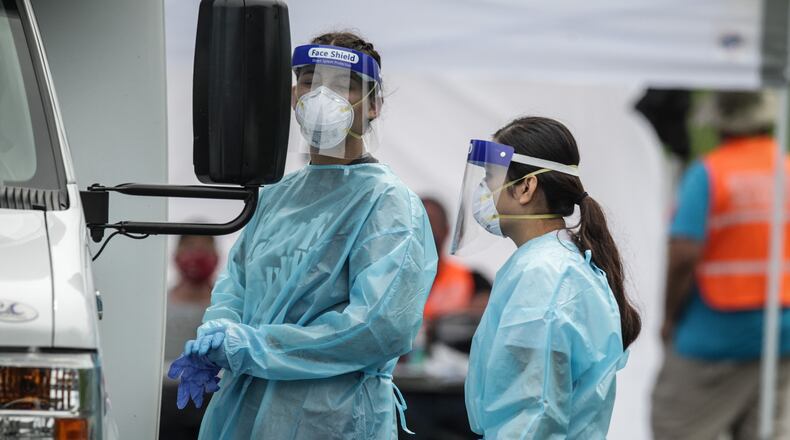DeWine, who will address the state at 5:30 p.m. today, called the recent data “alarming.”
“Everyone must take this pandemic seriously. It’s up to all of us to stop this spread," DeWine said.
The DeWine administration would not expand on what the governor plans to say during his address today. DeWine has said previously he was not in favor of tightening restrictions, but did say he would do what is necessary to keep Ohioans safe.
Ohio has reported 261,482 total cases and 21,037 hospitalizations throughout the pandemic. The state received reports of another 23 deaths on Tuesday, boosting the total to 5,547, according to the Ohio Department of Health.
Dr. Bruce Vanderhoff, incoming Ohio Department of Health chief medical officer, said the state is seeing an “unprecedented” surge in hospitalizations.
“If we don’t control the spread, we won’t be able to continue caring for the acutely ill without postponing important, but less urgent, care,” he said. “This kind of shift could happen in a matter of weeks if trends don’t change.”
As of Tuesday, there are 2,747 COVID-19 patients in Ohio hospitals with 656 in the ICU and 327 on ventilators. In southwest Ohio, there are 738 coronavirus patients in hospitals, up from 671 reported on Monday.
COVID-19 patients account for 10.73% of the region’s hospital beds, with 25.56%, or 1,758 beds, still available. Non-coronavirus patients account for 63.71% or 4,381 of southwest Ohio’s hospital beds.
Newly confirmed infections in the U.S. are running at all-time highs of well over 100,000 per day, pushing the running total to more than 10 million. Deaths — a lagging indicator, since it takes time for people to get sick and die — are climbing again, reaching an average of more than 930 a day.
Hospitals are getting slammed. And unlike the earlier outbreaks, this one is not confined to a region or two. Cases are on the rise in 49 states.
“The virus is spreading in a largely uncontrolled fashion across the vast majority of the country,” said Dr. William Schaffner, an infectious-disease expert at Vanderbilt University.
While deaths are still well below the U.S. peak of about 2,200 per day back in April, some researchers estimate the nation’s overall toll will hit about 400,000 by Feb. 1, up from about 240,000 now.
But there is also some good news.
Doctors now better know how to treat severe cases, meaning higher percentages of the COVID-19 patients who go into intensive care units are coming out alive. Patients have the benefit of new treatments, namely remdesivir, the steroid dexamethasone and an antibody drug that won emergency-use approval from the Food and Drug Administration on Monday. Also, testing is more widely available.
In addition, a vaccine appears to be on the horizon, perhaps around the end of the year, with Pfizer this week reporting early results showing that its experimental shots are a surprising 90% effective at preventing the disease.
The increased cases in this area is creating a nightmare for schools in their planning and transportation.
Troy, Fairborn and Kettering have reported transportation problems due to bus drivers with COVID-19 or they having to quarantine. And West Carrollton, Wayne and Trotwood schools announced this week they would be going back to online school because of high numbers of COVID-19 cases.
About the Author
